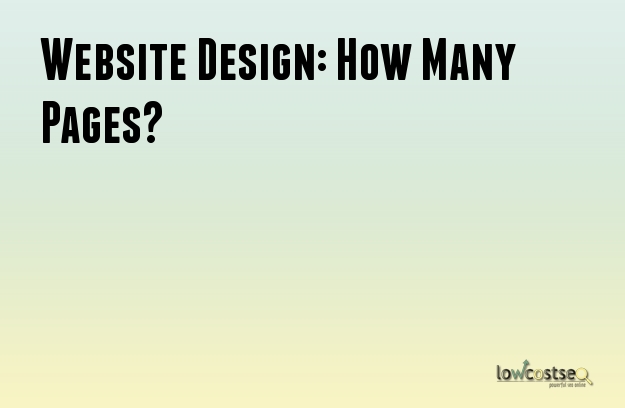
When you think of website design, you often imagine a traditional design, wherein the homepage branches into landing pages and further, deeper pages down the navigational tree. This is what most people imagine, yet more and more websites are experimenting with a single page design.
From the perspective of an SEO agency, how does this influence your overall success? In all actuality, it can actually make quite a big impact, but it’s not necessarily all bad.
The Benefits Of Multiple Pages
The key benefit of having multiple pages in a standard website design, at least from an SEO perspective, is that it allows you to narrow various areas of your business into specific pages. This is very important when you want to drive certain traffic to certain areas. Needless to say, your keyword assessment is much easier when each product, service or topic has its own specific URL to direct to.
By spreading out your content, a traditional website structure also lets you prioritise where you focus. This could be through typical keywords, highlighting your landing pages for example, or a PPC campaign on specific product, service or sale pages. You can even move the irrelevant data - that you don’t want to be crawled or appear in Google, for instance – through your robots.txt file.
Navigation Issues
However, while there are some strong benefits to multiple pages, it’s very easy to go overboard. If your website gets too large, it can negate the user experience. After all, if people don’t know where to go, the website loses its purpose and you’ll end up with a high bounce rate as people look elsewhere.
Similarly, you also have to consider the crawling budget. With a bigger navigational structure, including the various redirects that can build up, there’s much more potential to lose crawling power in these irrelevant spaces – a problem a single-page structure never has to deal with.
Single Page Websites
So, what about single page websites? This is something many companies are considering these days, as they work well on mobile devices.
On the plus side, done right, a single page can load much faster, especially on mobile devices. It’s been said numerous times by now that loading times are a critical factor for engagement on mobile devices and Google has already shown a strong focus on appreciating the mobile experience.
When looking at the benefits of single page websites, it’s hard to ignore the page authority. On a wider website, individual pages will have varying levels of authority. However, since every link to your website goes to the same page, your individual page and domain authority is the same.
The key issue, as mentioned earlier, is that a singular page doesn’t allow for much keyword targeting. This is why the most effective singular page sites, such as the Apple Plug website, have a very specific, narrow niche.
As you can see, there are certainly a few niche areas where a singular page can very well work for you. However, which ever website design you choose to follow, it’s important to play to its SEO strengths and not fall into its various pitfalls and traps.
